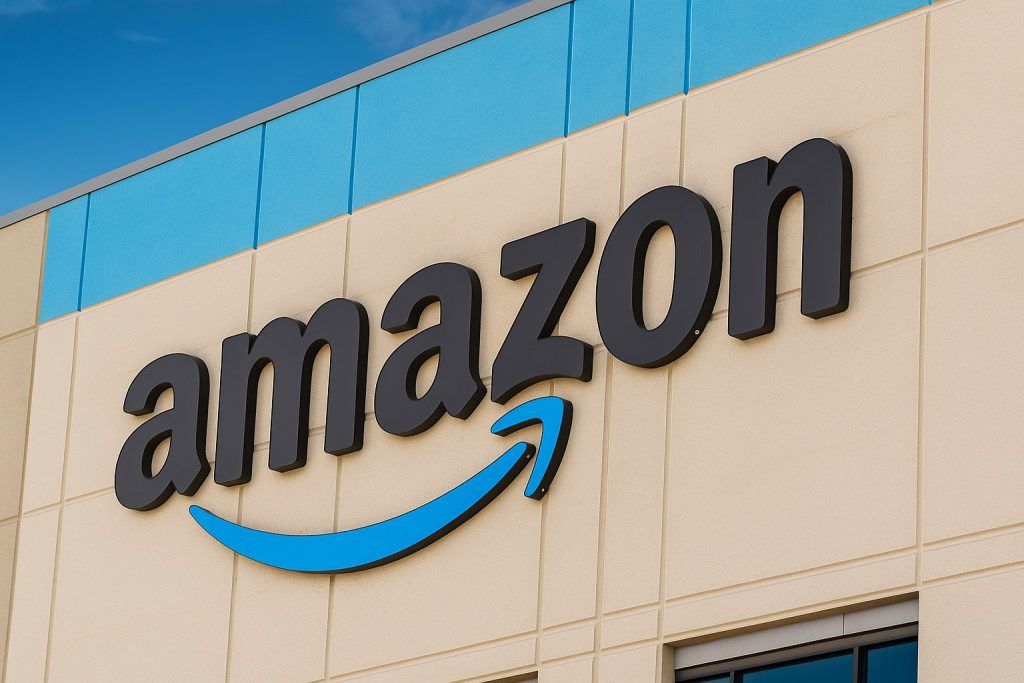- Share Price & Market Cap: The Home Depot (NYSE: HD) closed around $379.59 on Oct. 31 [1]. After a rally into early October (~$395 peak [2]), HD is down about 6.8% YTD versus a ~4.3% decline in the S&P 500 [3]. Its market capitalization is on the order of $350+ billion [4].
- Valuation: HD trades at a forward P/E of ~25.7 (slightly above the S&P 500 median of ~23.6) [5]. It offers a healthy dividend ($2.30 quarterly declared in Aug 2025 [6], roughly a 2.4% yield) plus aggressive buybacks – totaling $130 billion returned to shareholders over the last decade [7].
- Recent Results & Guidance: In Q2 FY2025 (ended Aug. 3), Home Depot posted $45.28B revenue (slightly below the $45.36B estimate) and $4.68 EPS (vs. $4.71 expected) [8]. Management reaffirmed 2025 guidance: about 2.8% sales growth and roughly 2% earnings decline versus last year [9]. Analysts forecast FY2025 EPS around $15.0 [10], roughly flat year-over-year. The company’s next earnings report is due Nov. 18, 2025.
- Business Update: Home Depot is strengthening its pro-contractor business: it completed the acquisition of GMS in September (via its SRS Distribution subsidiary) [11]. The company continues to expand same-day/next-day delivery and digital tools. As of August 2025, CFO Richard McPhail noted that price increases would be limited (“modest price movement in some categories”) to offset tariffs [12]. Importantly, McPhail said customer feedback indicates “Home improvement demand persists”, even if some projects are merely deferred, not canceled [13].
- Analyst Sentiment & Targets: Wall Street is generally bullish on HD. About 75% of analysts rate it a Buy or Strong Buy [14]. The consensus price target is roughly $423 (implying ~17% upside) [15]; the highest forecasts approach $475 (≈31% upside) [16]. (For context, Truist raised its HD target from $291 to $393 in May [17].) However, some value-focused investors note growth is limited; one Seeking Alpha contributor suggests rating HD a Hold today given its already-premium valuation and cyclical risks [18].
Recent Price Performance & Valuation
Home Depot stock has been relatively range-bound in recent weeks. It traded near $395 in early October (e.g. Oct. 2–3 closes around $395.00 [19]) before drifting to about $379.6 by the end of the month [20]. This modest pullback follows a four-year high set in late 2021. On a year-to-date basis, HD is down roughly 7%, lagging the broader market (S&P 500 down ~4% YTD) [21]. During Q3, some funds took profit – for example, one hedge fund disclosed it sold $11.8 million of HD stock after HD had fallen about 19% from year-ago levels [22].
Despite this lag, HD’s valuation remains high by historic standards. Its P/E of ~25–26 is slightly above the S&P 500 median [23], reflecting confidence in long-term cash flows. Importantly, Home Depot has returned enormous capital to shareholders – nearly $130 billion via dividends and buybacks over ten years [24], the 14th largest such total in market history. The company most recently declared a $2.30 quarterly dividend (mid-August 2025) [25]. These payouts and shrinking share count boost intrinsic value, but analysts note growth may be slowing: revenue rose 8.5% in the last 12 months, but only ~2.2% annualized over three years [26]. In short, Home Depot looks like a high-quality, cash-rich company – but trading at a premium multiple given its mature business.
Recent Financial Results & Guidance
In its latest quarter (Q2 FY2025, ended August 3), Home Depot missed revenue and EPS forecasts by a hair [27]. Net sales were $45.28B (vs. $45.36B expected) and adjusted EPS was $4.68 (vs. $4.71 expected) [28]. Management nonetheless affirmed full-year guidance: roughly +2.8% sales growth and ~–2% EPS change versus 2024 [29]. On the earnings call CFO McPhail emphasized that most retail prices would be held steady despite tariffs, with only “modest price movement in some categories” [30]. He also reported continued strength in the contractor segment, noting that survey responses indicate projects are being deferred but not abandoned – in his words, “Home improvement demand persists.” [31]
Despite these positives, external headwinds remain. CEO Ted Decker warned that the U.S. housing market is still sluggish, which limits big-ticket remodels [32]. Indeed, homebuilder sentiment hit multi-year lows and single-family permits have slowed this year [33]. Analyst Joseph Feldman (Telsey Advisory) notes that consumers are being “selective in their approach to discretionary categories,” implying they may spend cautiously on home projects [34]. Home Depot’s strategy to counter this is twofold: expand its professional (Pro) business and leverage its scale. The GMS acquisition (completed Sept. 2025) adds over 100 new specialty stores serving contractors [35], and HD has invested heavily in faster delivery and expanded pro-focused supply chains.
Industry & Economic Context
Home Depot’s performance is tied to the housing and construction cycles. After a post-pandemic surge in DIY, the market has cooled. New single-family home starts have fallen from last year’s highs, even as multi-family construction ticked up [36]. Higher interest rates and inflation have kept many homeowners on the sidelines of major renovations. That said, broader macro data show some easing pressures: October’s CPI came in at +3.0% YoY [37] (down from summer peaks), bolstering expectations of eventual Federal Reserve rate cuts. Lower rates next year could rejuvenate mortgages and home improvement spending. For now, investors will watch economic indicators (like employment and inflation reports) for clues on when consumers might feel more confident tackling home projects.
Meanwhile, Home Depot faces competition from Lowe’s and online retailers, but HD’s market share in home improvement remains high (cited as #1 by a recent survey). Its digital sales platform and Pro loyalty programs continue to grow. Still, any renewed spending downturn could pressure sales. Acknowledging this uncertainty, Home Depot has pulled back on promotions in some categories and remains cautious on inventory.
Analyst Perspectives & Price Targets
The average Wall Street stance is upbeat. Among 36 analysts covering HD, roughly 75% rate it a Buy/Strong Buy [38]. The consensus price target is about $423, roughly 17% above the current price [39]. The most bullish target approaches $475 (implying ~31% upside) [40]. By contrast, the low target is near $350, suggesting some see little near-term upside. (For reference, as of early Oct. HD’s stock was essentially flat year-over-year [41].)
Some analysts cite HD’s dependable cash flows and share buybacks as reasons for optimism. For example, the fact that HD has delivered $130B to investors [42] reinforces management’s confidence. On the other hand, certain value investors argue the share price already reflects much of HD’s prospects. A recent Seeking Alpha piece (summarized on TS2.tech) advises treating Home Depot as a high-quality business but rates it a Hold given limited growth headroom [43]. In sum, bullish analysts believe Home Depot can resume outperforming if housing or pro-contractor demand picks up, while bears point to the slowing U.S. remodeling cycle as a constraint.
Outlook & Monday’s Open
Going into Monday’s open, key factors will include overall market sentiment and any overnight news. Global markets recently moved higher on cooling inflation and hopes for Fed rate cuts [44], which could lift stocks broadly. If this risk-on tone holds, Home Depot might see moderate gains as investors warm to a perceived “defensive growth” name. Conversely, lingering concerns about a weak housing sector or any new trade/tariff news (e.g. on imports) could weigh on HD.
Given its solid fundamentals, many analysts expect Home Depot to grind higher over time, targeting the low-$400s by late 2026. In fact, some forecasts (e.g. TipRanks data) put the average 12–18 month target around $445–450 (≈15% above current) [45] [46]. However, absent a clear catalyst, stock swings this week may mirror general retail and economic news.
Bottom Line: Home Depot remains a cash-rich, dividend-paying leader in home improvement. As of today, it trades in line with its long-term averages but with slower growth prospects [47] [48]. Monday’s premarket performance will likely hinge on broader market trends and any new data; in the longer run, analysts still see roughly double-digit upside if HD’s business stabilizes. Investors should watch the stock’s technical support near $370–380 and analyst guidance after Fed announcements. For now, Home Depot looks fairly valued, with a favorable yield, but may need renewed economic momentum or housing strength to justify a sustained rally.
Sources: Latest data and analysis from Home Depot’s filings and earnings (Aug 2025) [49] [50], financial news reports [51] [52], TS2.tech market summaries [53] [54], and analyst/financial commentary [55] [56]. These reflect information up to Nov. 2, 2025.
References
1. www.investing.com, 2. www.investing.com, 3. www.nasdaq.com, 4. www.nasdaq.com, 5. www.trefis.com, 6. ir.homedepot.com, 7. www.trefis.com, 8. www.reuters.com, 9. www.reuters.com, 10. www.nasdaq.com, 11. ir.homedepot.com, 12. www.reuters.com, 13. www.reuters.com, 14. www.nasdaq.com, 15. www.nasdaq.com, 16. www.nasdaq.com, 17. www.nasdaq.com, 18. ts2.tech, 19. www.investing.com, 20. www.investing.com, 21. www.nasdaq.com, 22. ts2.tech, 23. www.trefis.com, 24. www.trefis.com, 25. ir.homedepot.com, 26. www.trefis.com, 27. www.reuters.com, 28. www.reuters.com, 29. www.reuters.com, 30. www.reuters.com, 31. www.reuters.com, 32. www.reuters.com, 33. www.reuters.com, 34. www.reuters.com, 35. ir.homedepot.com, 36. www.homedepot.com, 37. ts2.tech, 38. www.nasdaq.com, 39. www.nasdaq.com, 40. www.nasdaq.com, 41. ts2.tech, 42. www.trefis.com, 43. ts2.tech, 44. ts2.tech, 45. www.tipranks.com, 46. www.tipranks.com, 47. www.trefis.com, 48. ts2.tech, 49. www.reuters.com, 50. ir.homedepot.com, 51. www.reuters.com, 52. www.reuters.com, 53. ts2.tech, 54. ts2.tech, 55. www.trefis.com, 56. www.nasdaq.com





